Different Methods to Teach Multiplication: Make It Fun, Easy, and Memorable!
Teaching multiplication sometimes gets a bad rap. It’s often viewed as the “boring boss” of math—those endless rows of numbers that seem to go on forever and ever. But here’s a secret: multiplication doesn’t have to be a monotonous march. In fact, with the right approach, a splash of creativity, and maybe a sprinkle of silliness, multiplication can become one of the most enjoyable adventures your students embark on. So, if you’re tired of hearing groans when it’s time for multiplication practice or if your students stare blankly at their worksheets like they’ve just seen a ghost, this blog is for you! Let’s explore different methods to teach multiplication that kids will remember—and love.
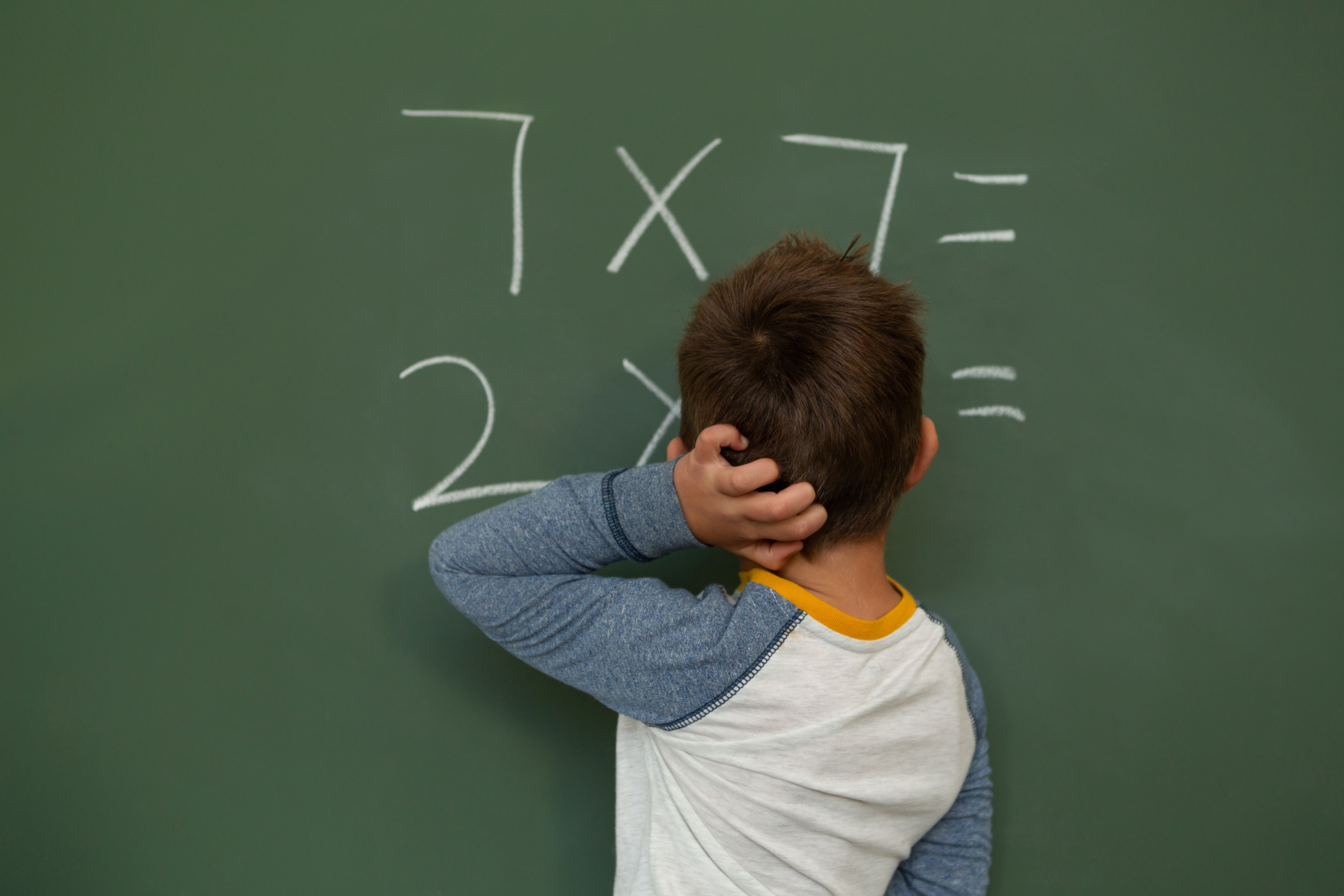
Why Fun Matters in Learning Multiplication Before we dive into the methods, let’s chat about why fun is not just a bonus, but a necessity when teaching multiplication. Imagine trying to memorize your multiplication tables while someone drones on with no context, no energy, and definitely no cat memes. Tough, right? When kids have fun, their brains light up like a Christmas tree. They stay engaged longer, remember more, and, bonus, they actually want to practice. Fun helps:
- Reduce anxiety: Math can be intimidating. Fun activities ease the pressure.
- Increase motivation: When learning feels like play, students look forward to it.
- Make abstract concepts concrete: Multiplication can be tricky to grasp, but hands-on, playful methods bring it to life.
- Build positive attitudes: A little humor and creativity can turn “I hate math” into “I love math!”
And yes, even grown-ups can appreciate a good laugh while crunching numbers.
Multiplication Activity Must-Haves: Your Ultimate Toolbox Let’s talk about the essential tools and activities that transform multiplication practice into an exciting challenge—not a chore.
1. Multiplication Chart 1-12: The Swiss Army Knife of Math This isn’t just any chart. It’s a magic map that shows products from 1 through 12 and breaks multiplication down in several ways:
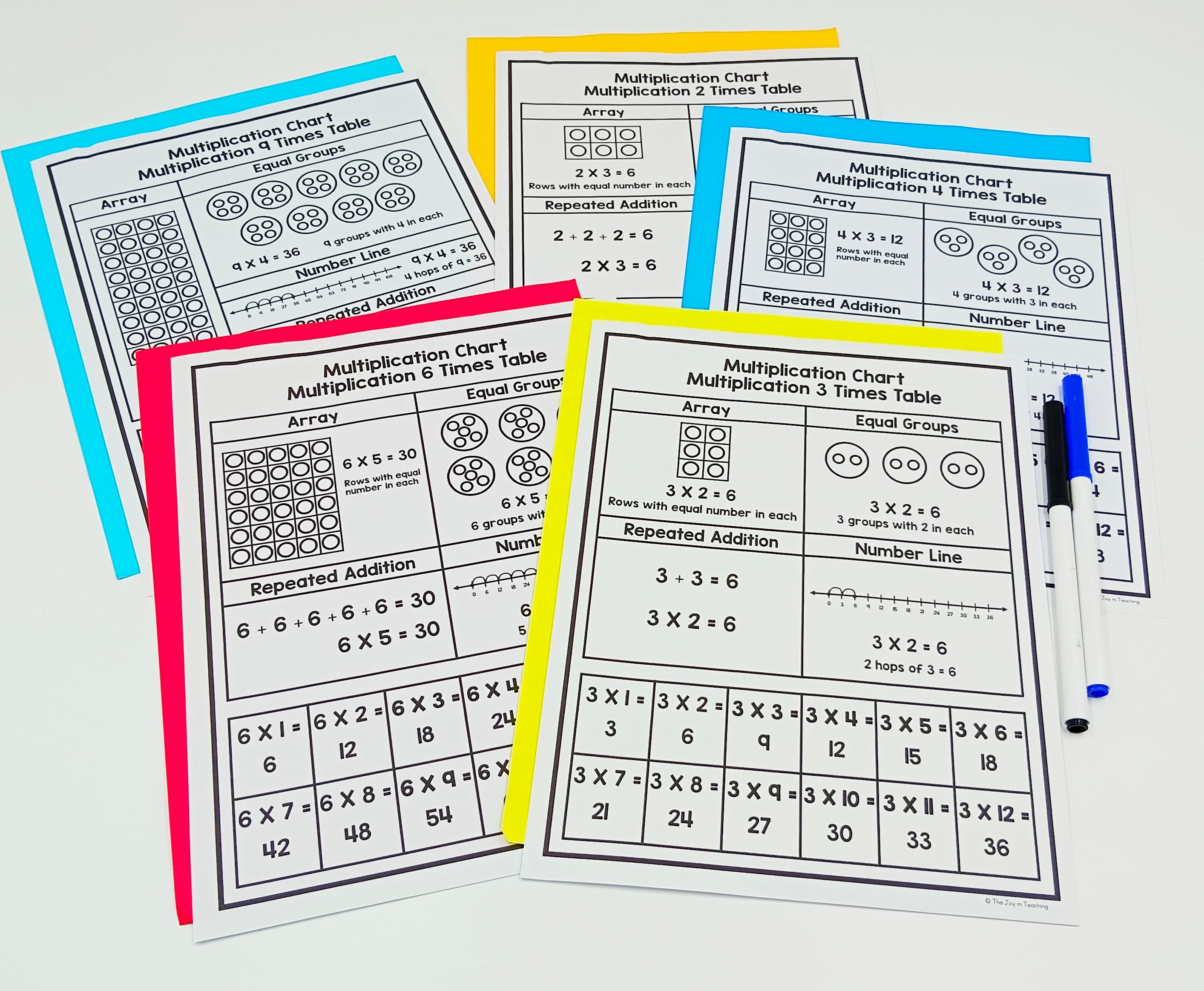
- Arrays (think of egg cartons or muffin tins)
- Equal groups (like bunches of grapes)
- Repeated addition (the slow but steady way)
- Number lines (visual jumps along a path)
Print it, laminate it, let kids cut it out or stick it to their desks. It’s versatile, visual, and oh-so-helpful for memorizing.
2. Multiplication Skip Counting: The Gateway to Mastery Skip counting is the math equivalent of “training wheels.” When kids can skip count by 2s, 3s, 4s, and beyond, multiplication begins to feel natural. Worksheets with colorful clip art turn “fill in the blanks” into a fun challenge, and the repetition helps solidify facts. Use these in morning work, assessments, or laminated for repeated practice.
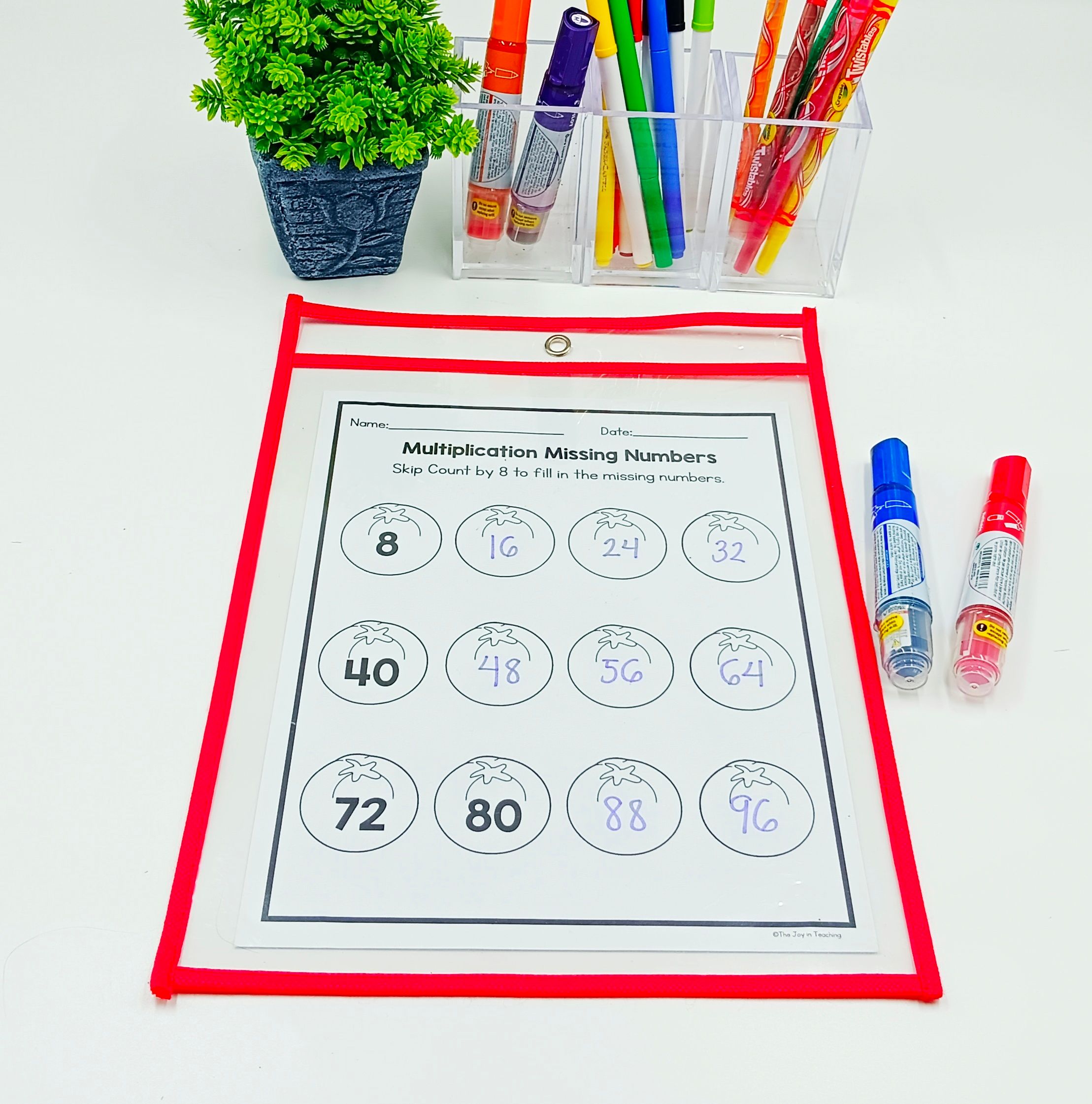
3. Multiplication True or False: Sharpen Those Brains! This is where math meets mystery. Challenge students with true or false statements and watch them become multiplication detectives. Bonus points if you throw in adorable cat and dog clip art—because who can resist critters solving math problems? This activity is perfect for centers or homework and encourages critical thinking.
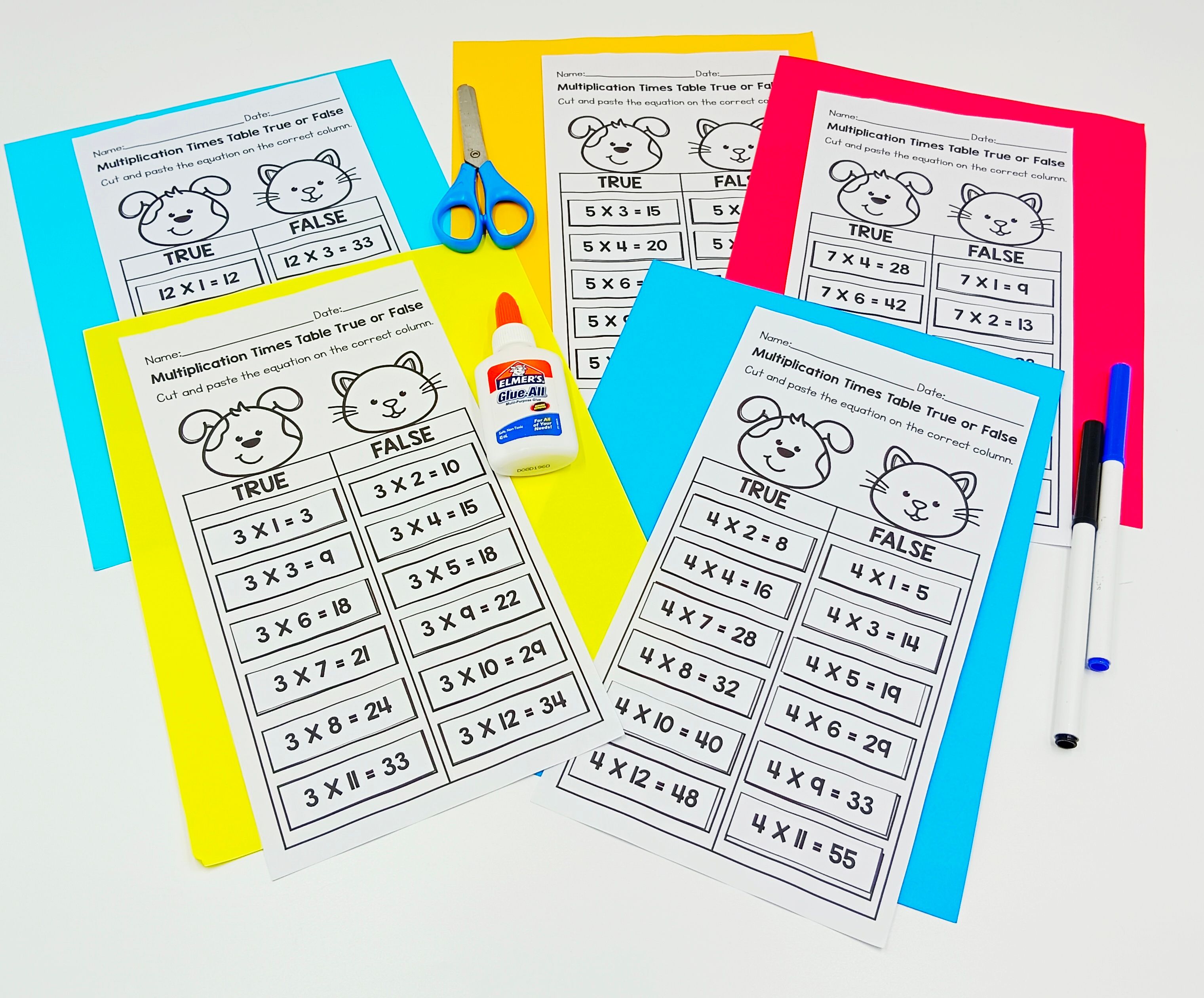
4. Multiplication Worksheets 1-12: Practice, Practice, Practice Repetition is queen in multiplication. These worksheets cover the basics and beyond. Pro tip: laminate them and use as morning work or center activities for sustainable practice that won’t wear out.
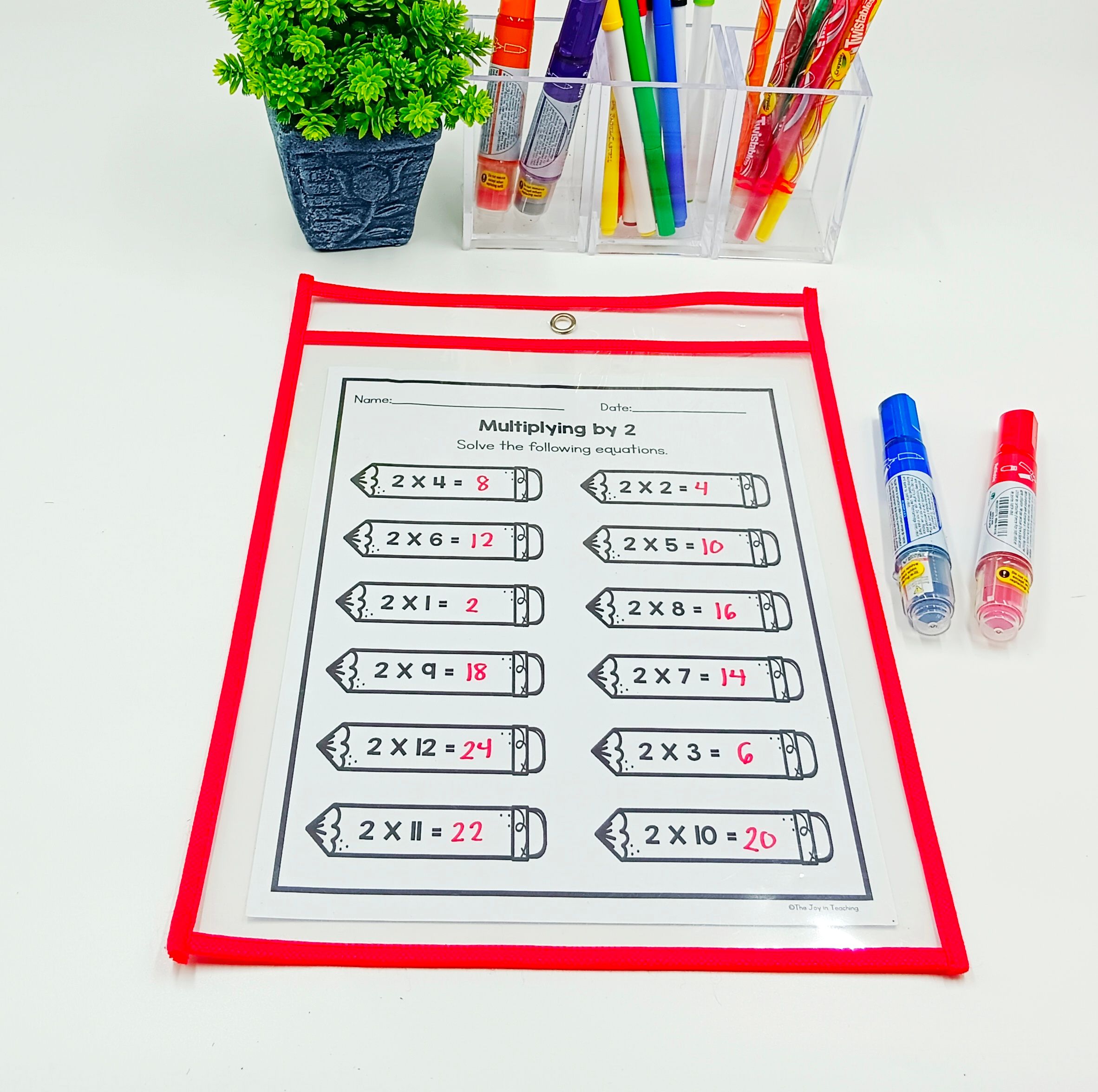
5. Multiplication Riddles: Math with a Twist of Mystery Who doesn’t love a good riddle? These multiplication riddles get kids thinking outside the box and solving problems with their wits. Add a prize for the top riddle solver and watch the motivation soar!
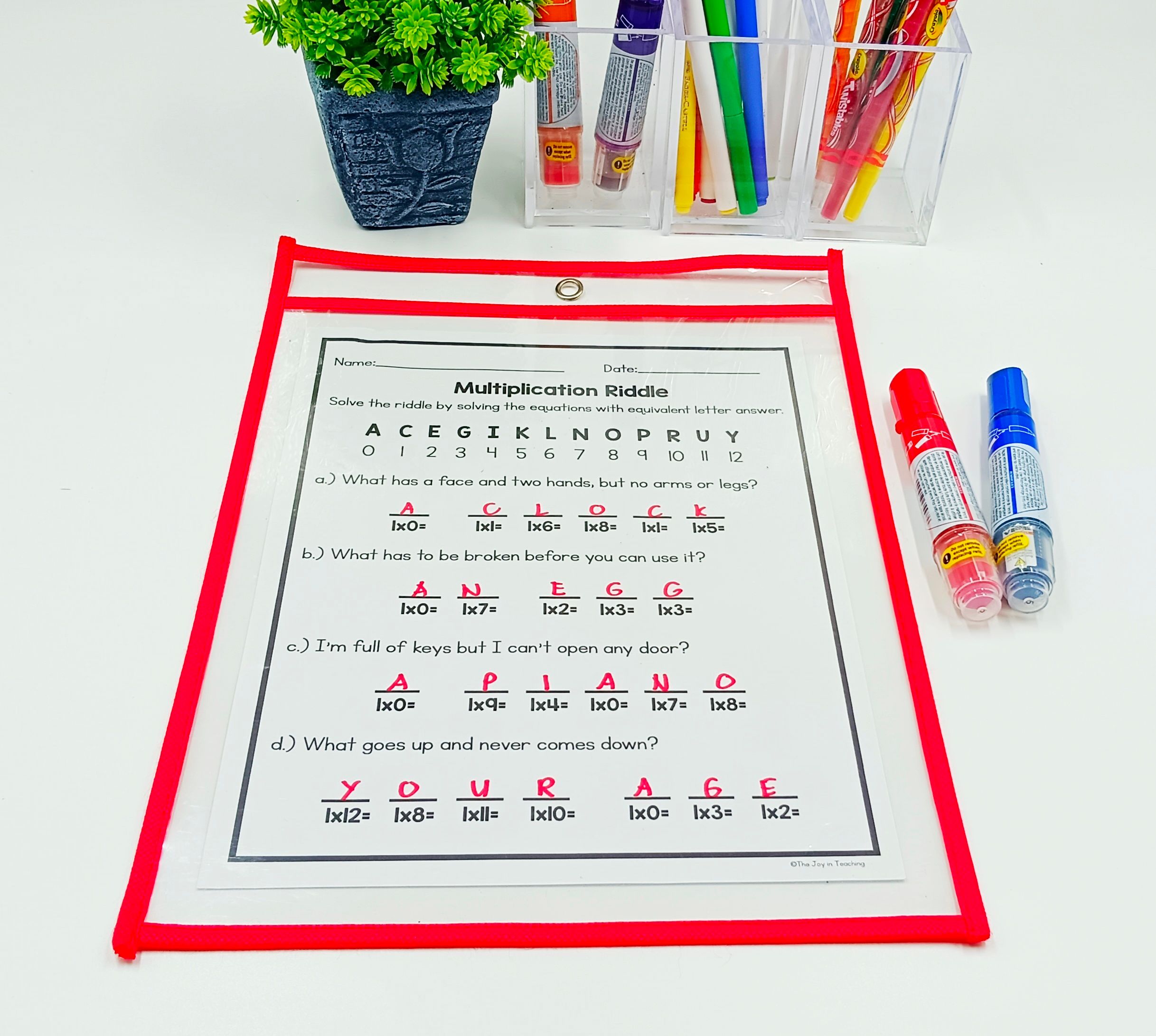
6. Multiplication Number Line: Visualize Those Hops Some students learn best when they see it. Number line worksheets show multiplication as repeated hops along a number line. It’s like a hopscotch game for math, and it makes the concept clear and intuitive.
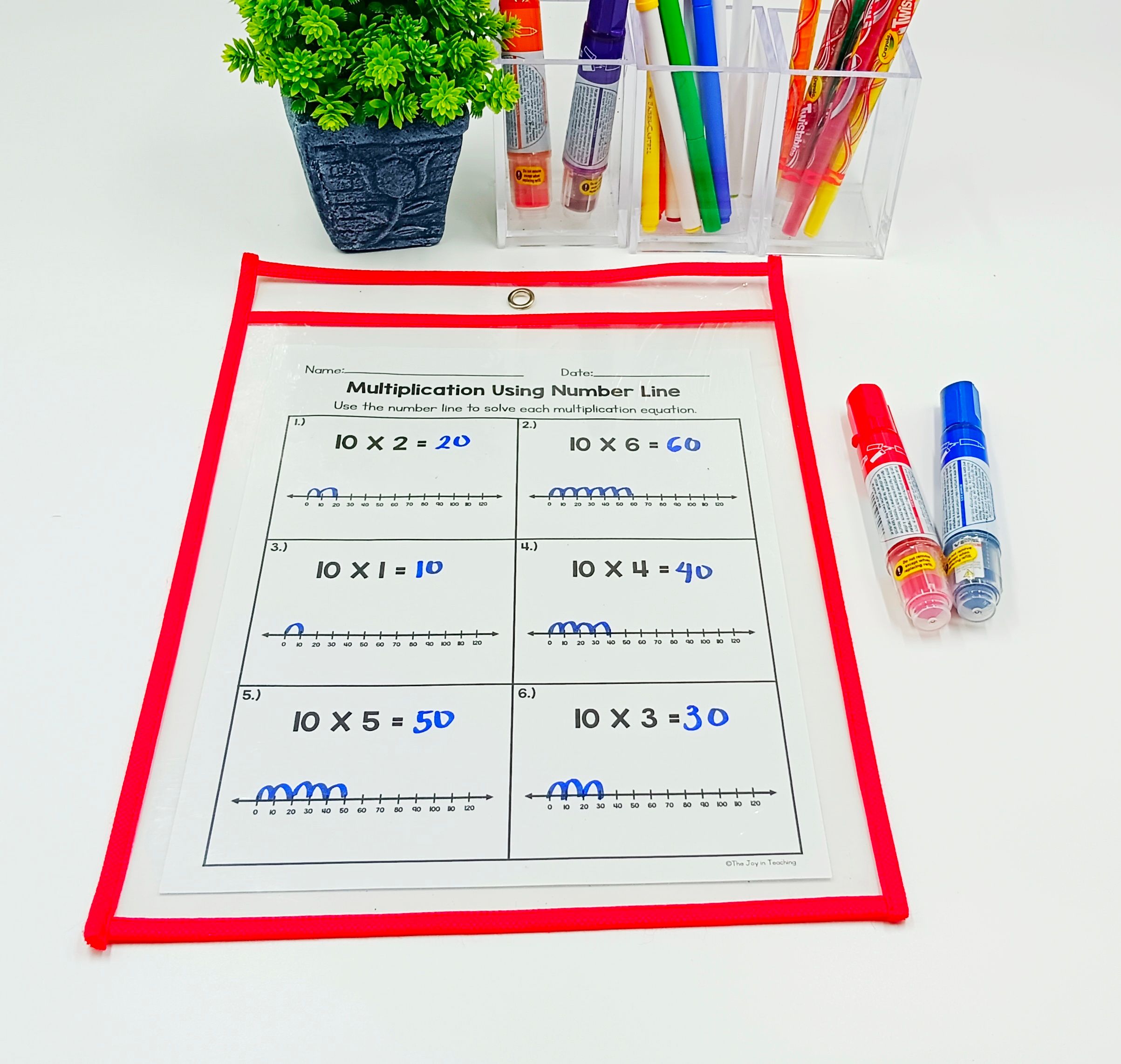
7. Multiplication Repeated Addition: The Bridge to Understanding Start simple by showing that multiplication is just faster addition. Worksheets help students make that connection and see multiplication as a shortcut, not a whole new monster.
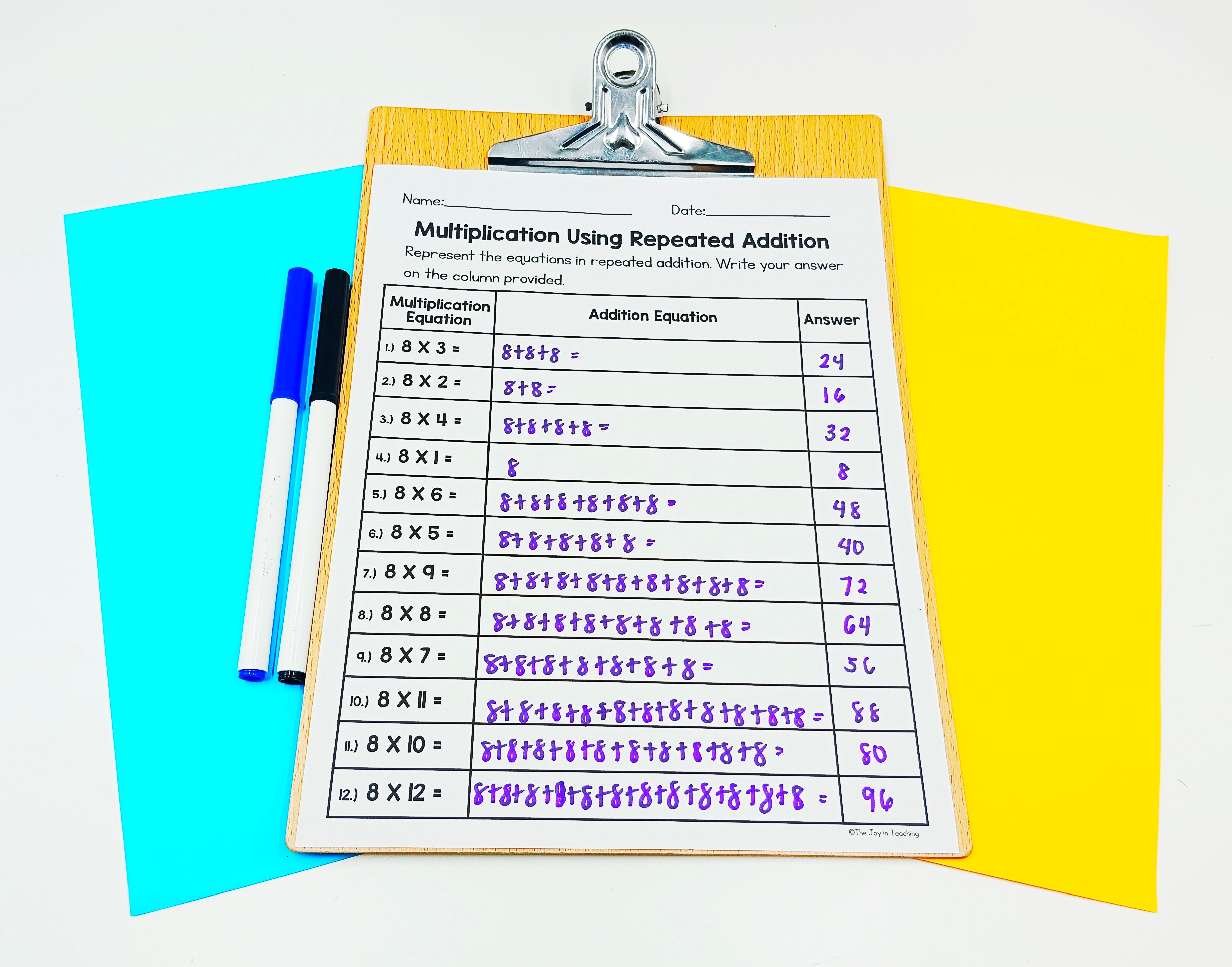
8. Multiplication Missing Numbers: A Puzzle for Problem Solvers Kids love a good puzzle! Find the missing factor or product in equations to strengthen problem-solving and lay the groundwork for division down the road.
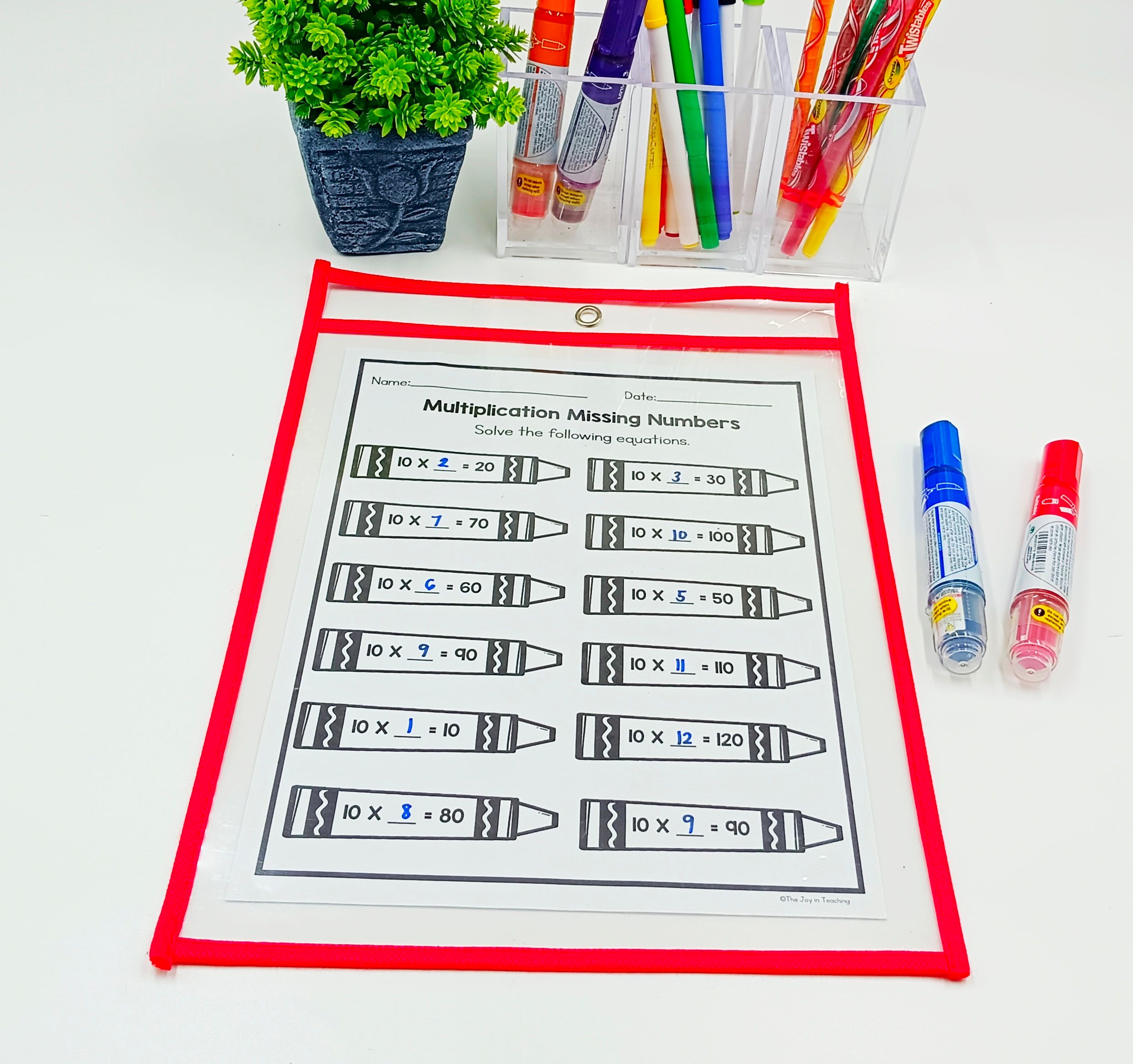
9. Multiplication Task Cards: Interactive and Fun Task cards are classroom superheroes. They’re perfect for independent work, group challenges, or centers. Covering everything from mental math to word problems, they keep learning dynamic and hands-on.
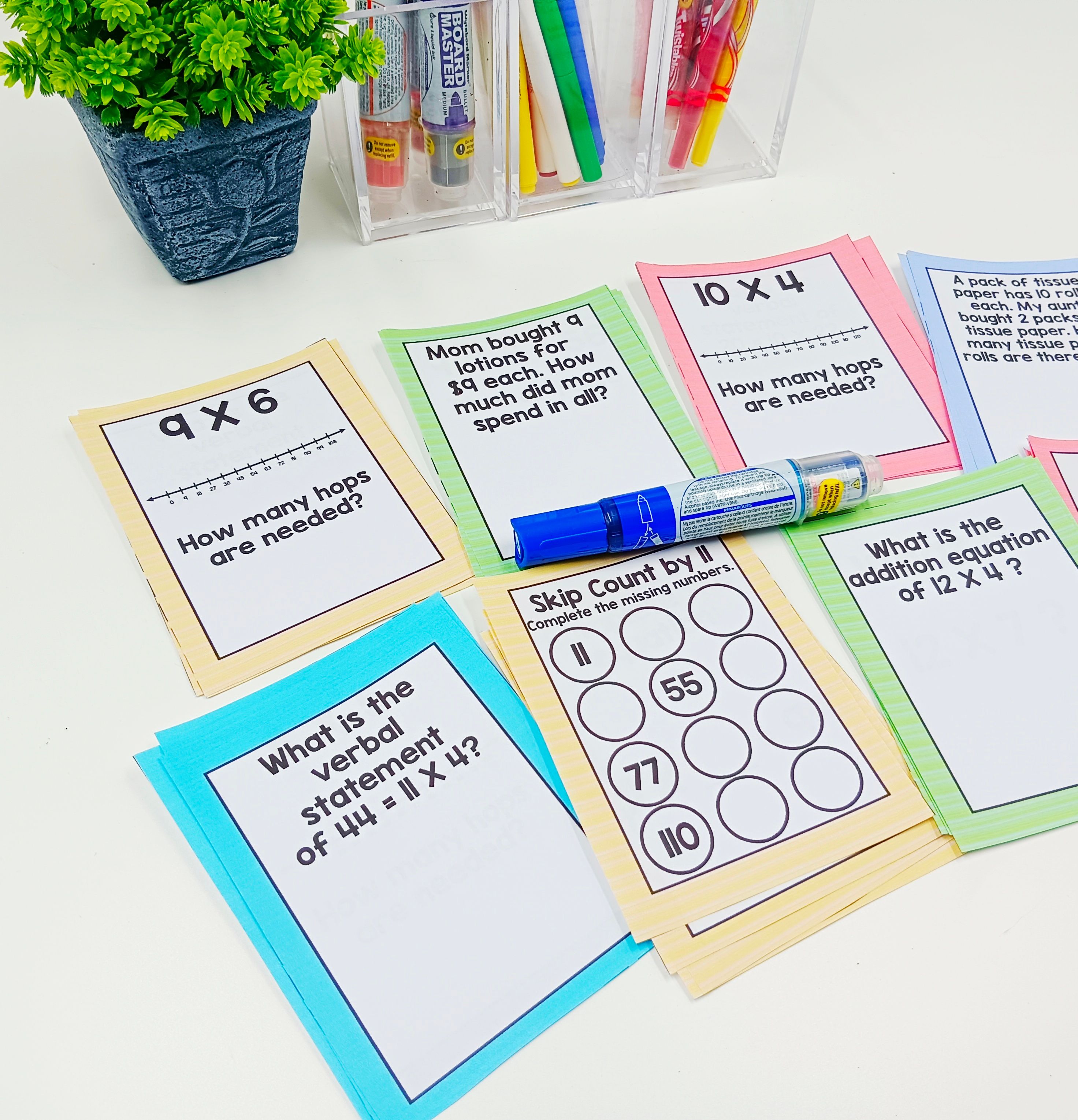
10. Multiplication Using Arrays: Art Meets Math Turn multiplication into an art project by having kids create arrays with paint and cotton buds. It’s tactile, visual, and memorable—plus, who doesn’t love a little mess in the name of learning?
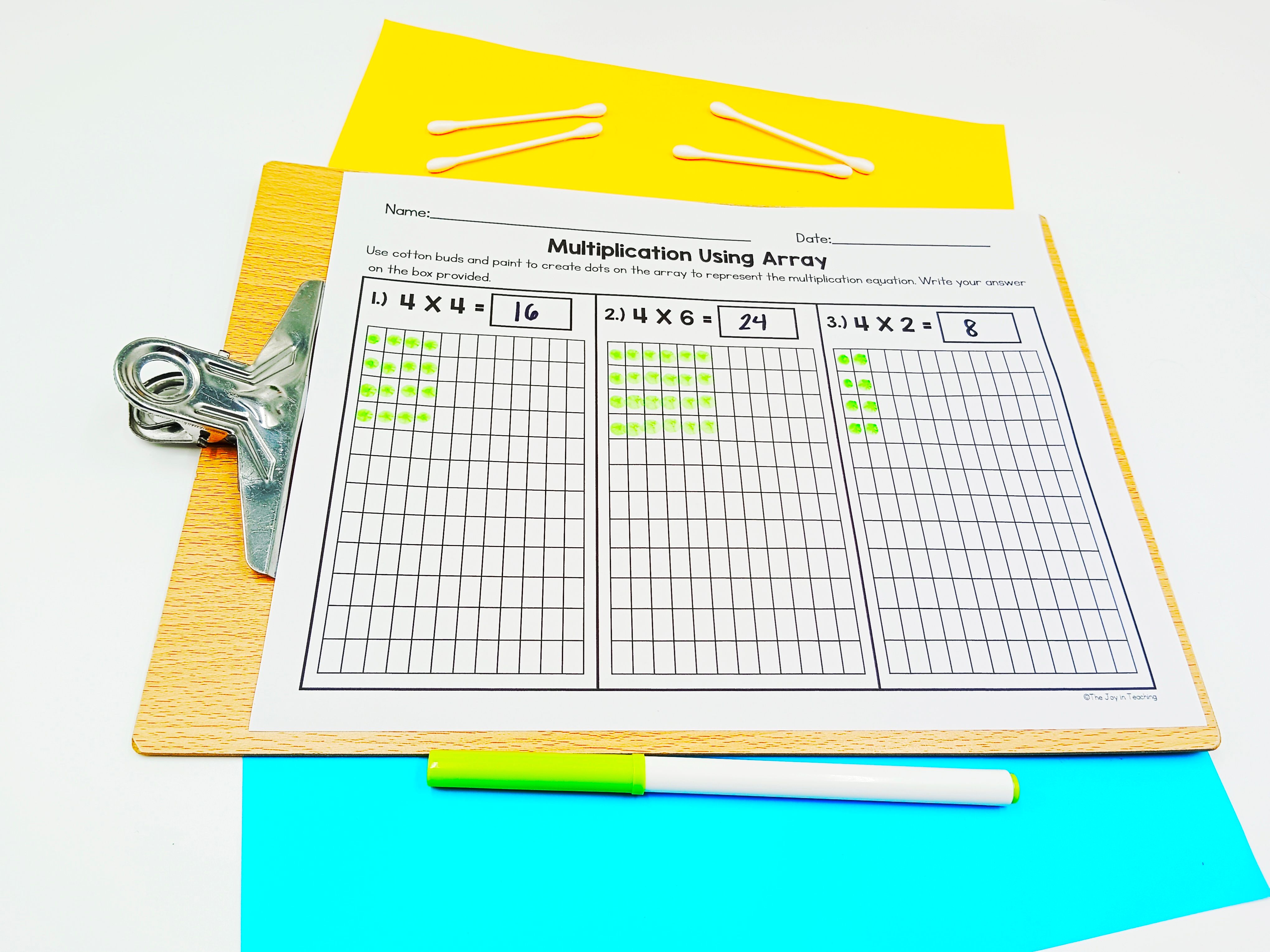
11. Multiplication Using Equal Groups: Concrete to Abstract Drawing groups and objects helps kids see multiplication as equal sets. It’s a concrete way to understand the abstract, perfect for visual and kinesthetic learners.
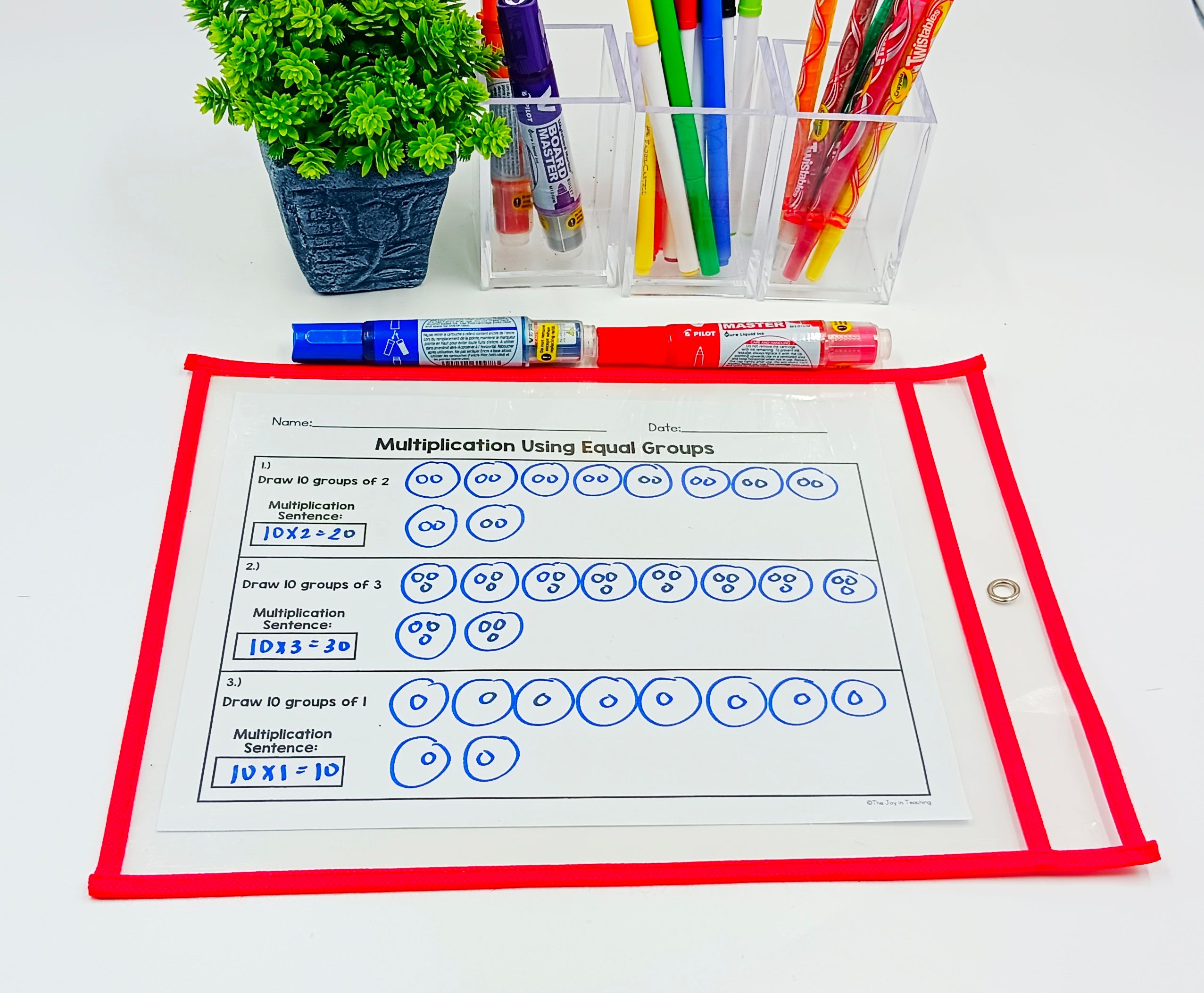
12. Multiplication Word Problems: Real-World Application When kids see multiplication in real-life contexts—like buying apples or scoring points—they get why it matters. Word problems make math relevant and boost comprehension.
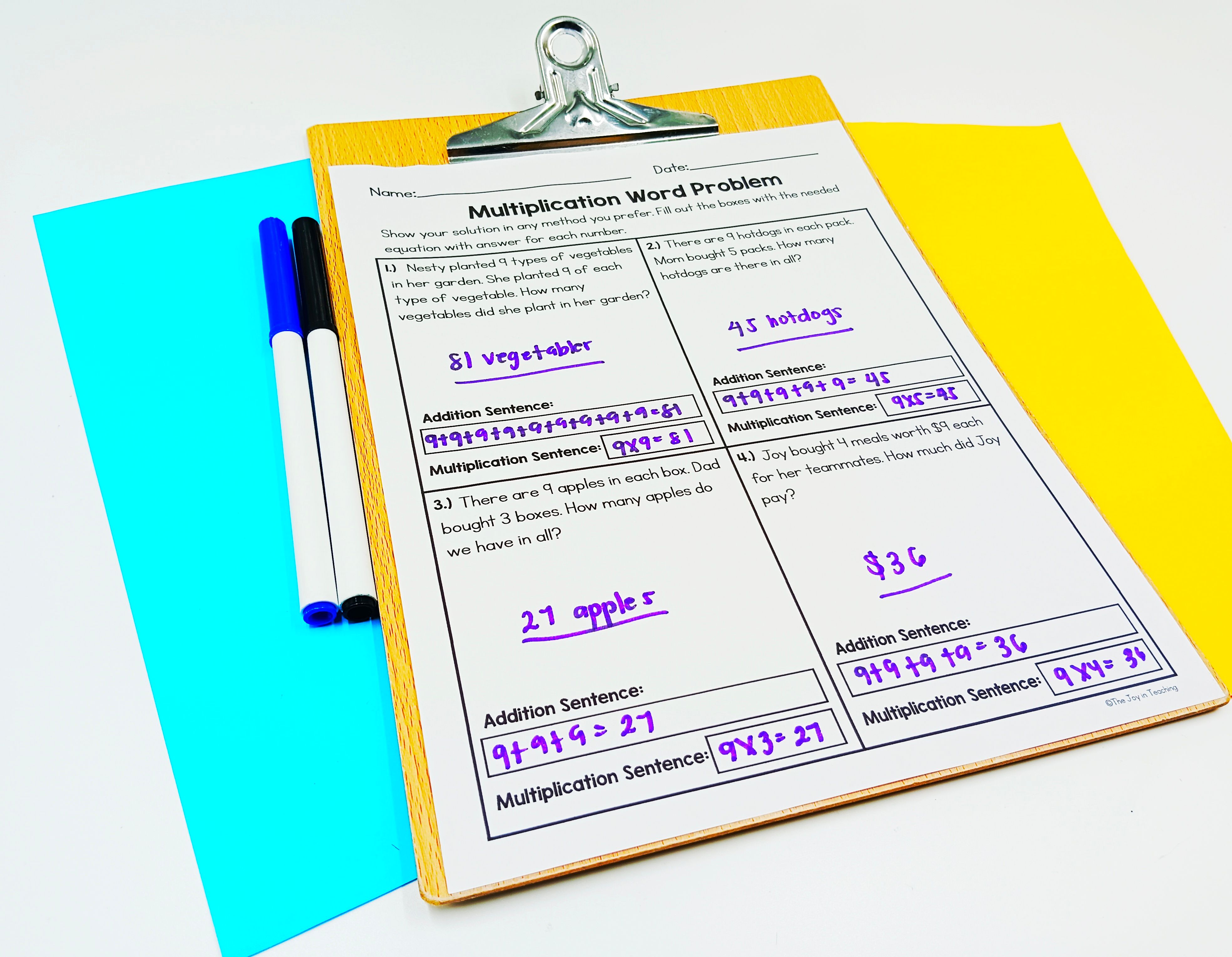
13. Multiplication Verbal Statements: Speak It to Learn It Encourage students to say multiplication equations out loud. Verbalizing helps with retention and communication skills. Plus, it’s fun to hear kids say “Three times four equals twelve” like little math wizards.
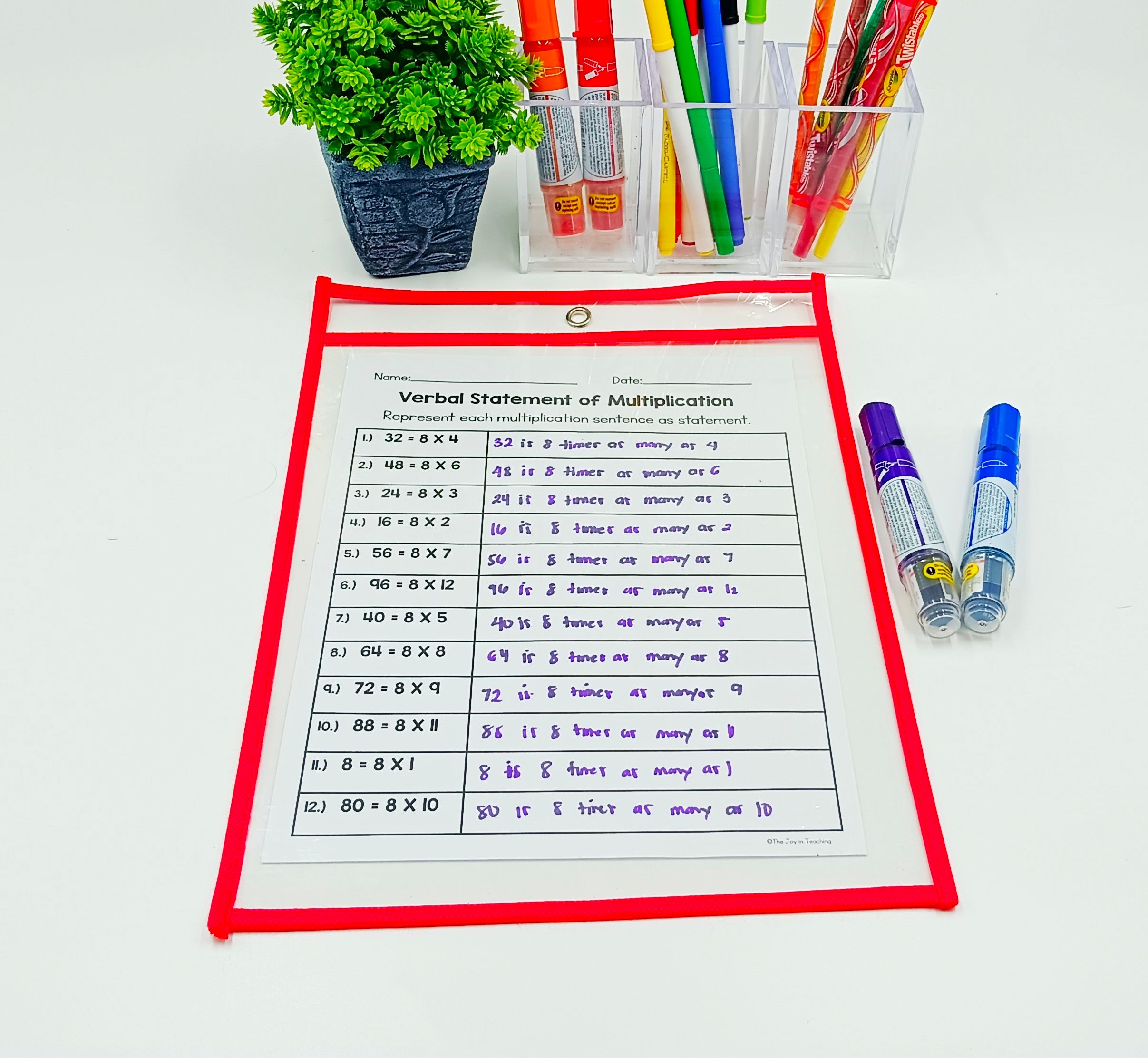
14. Area Model Multiplication: Seeing the Big Picture The area model shows multiplication as length × width, helping kids understand place value. It’s like building a mini math city block by block!
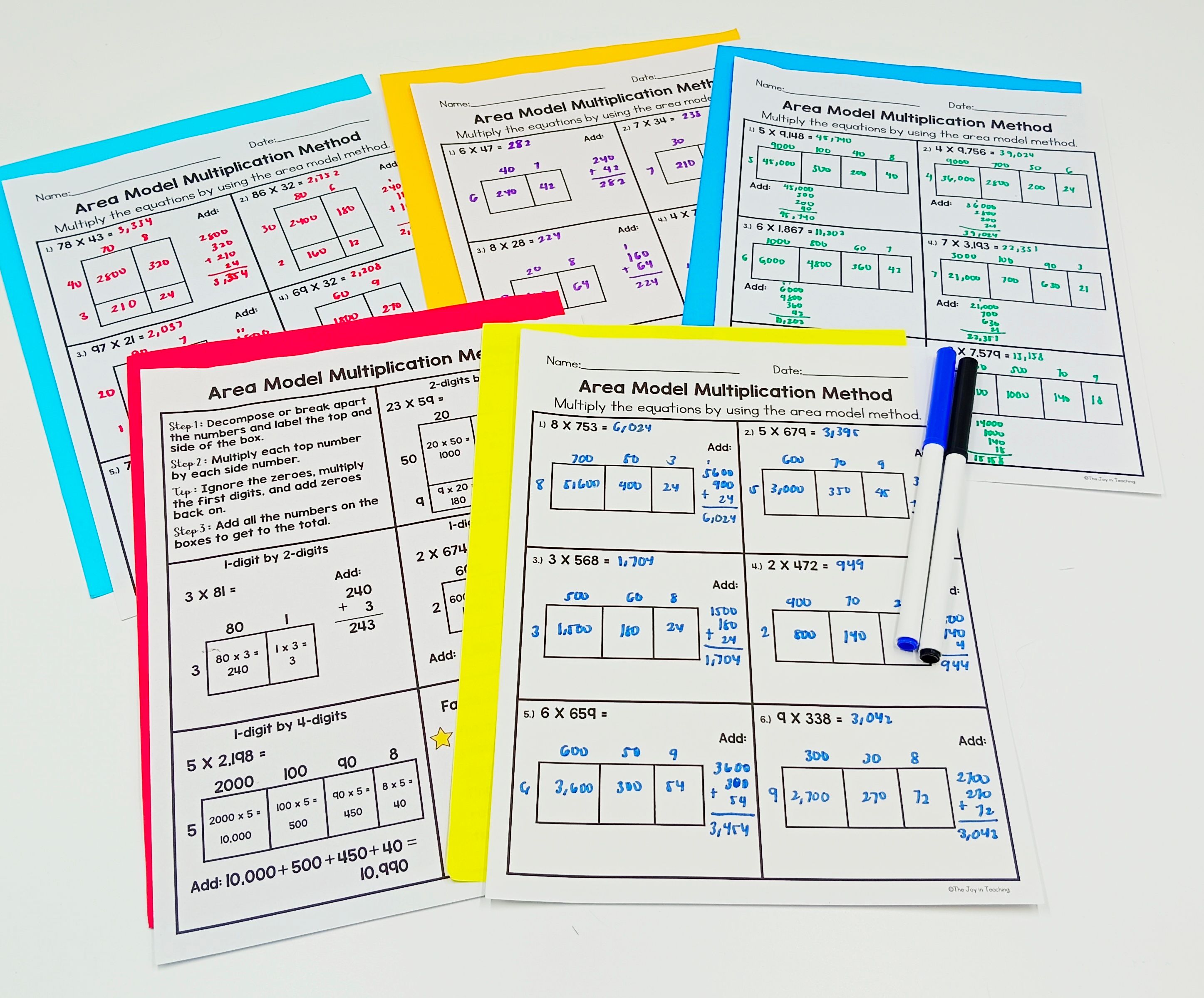
15. Box Method Multiplication: Breaking It Down This method breaks multiplication into chunks that are easier to manage. It’s a great way to tackle those big multi-digit problems without feeling overwhelmed.
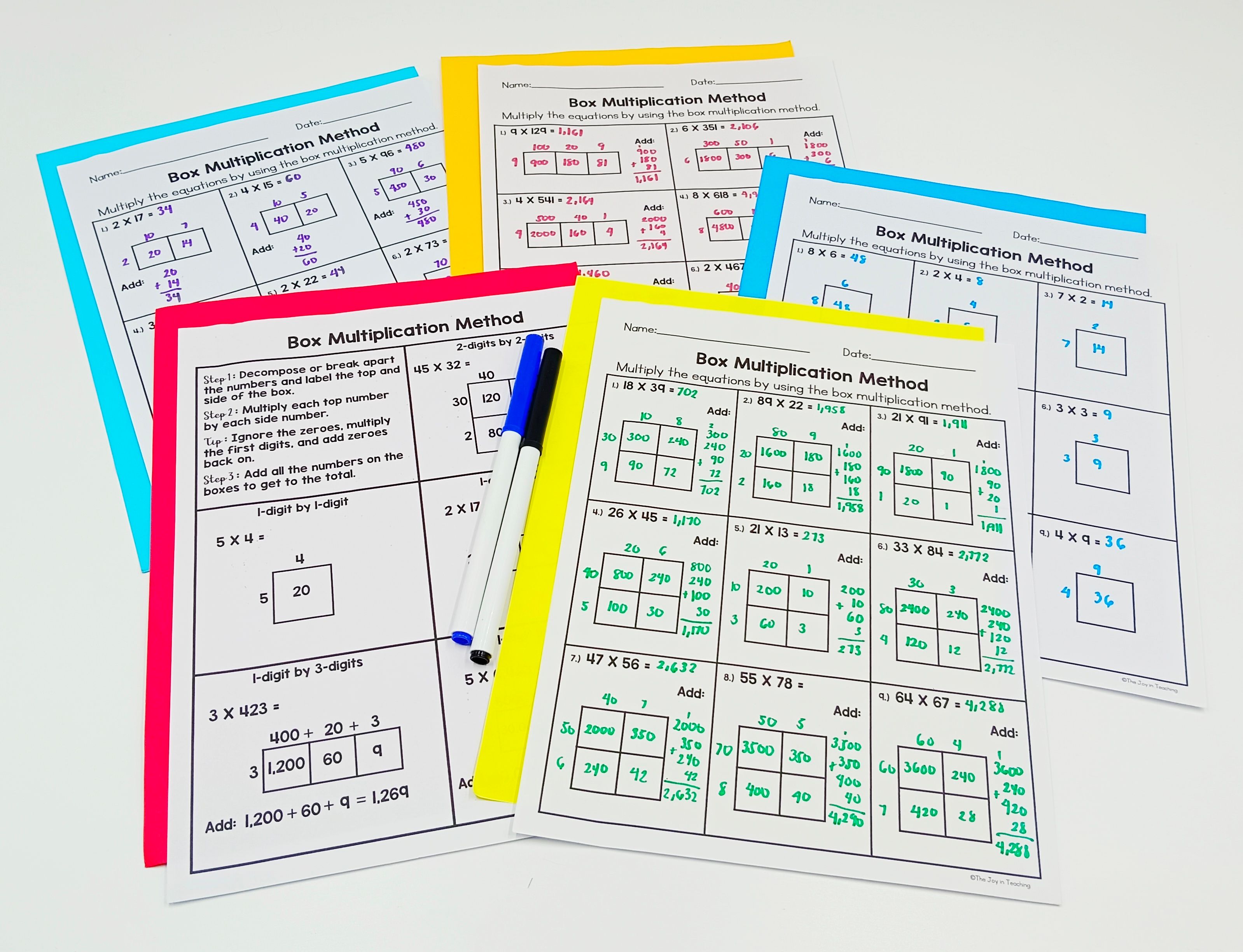
16. Distributive Method: Sharing the Load Teach the distributive property by breaking numbers apart and multiplying each part separately. It’s like dividing chores among friends—much easier when the work’s shared!
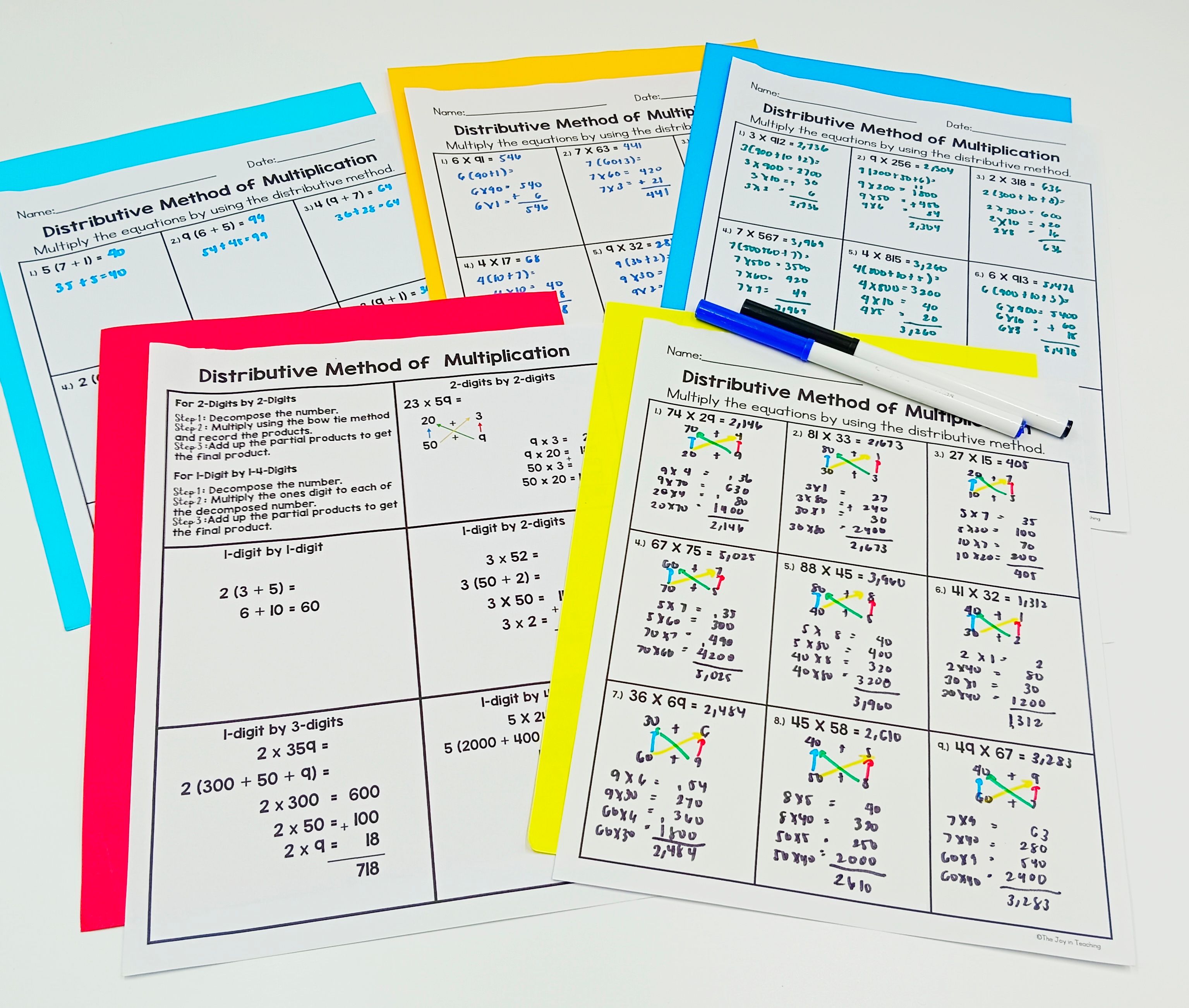
17. Lattice Multiplication: Math with a Twist Lattice multiplication might sound fancy, but it’s a fun, organized way to multiply large numbers. Kids love the neat grids and the step-by-step approach.
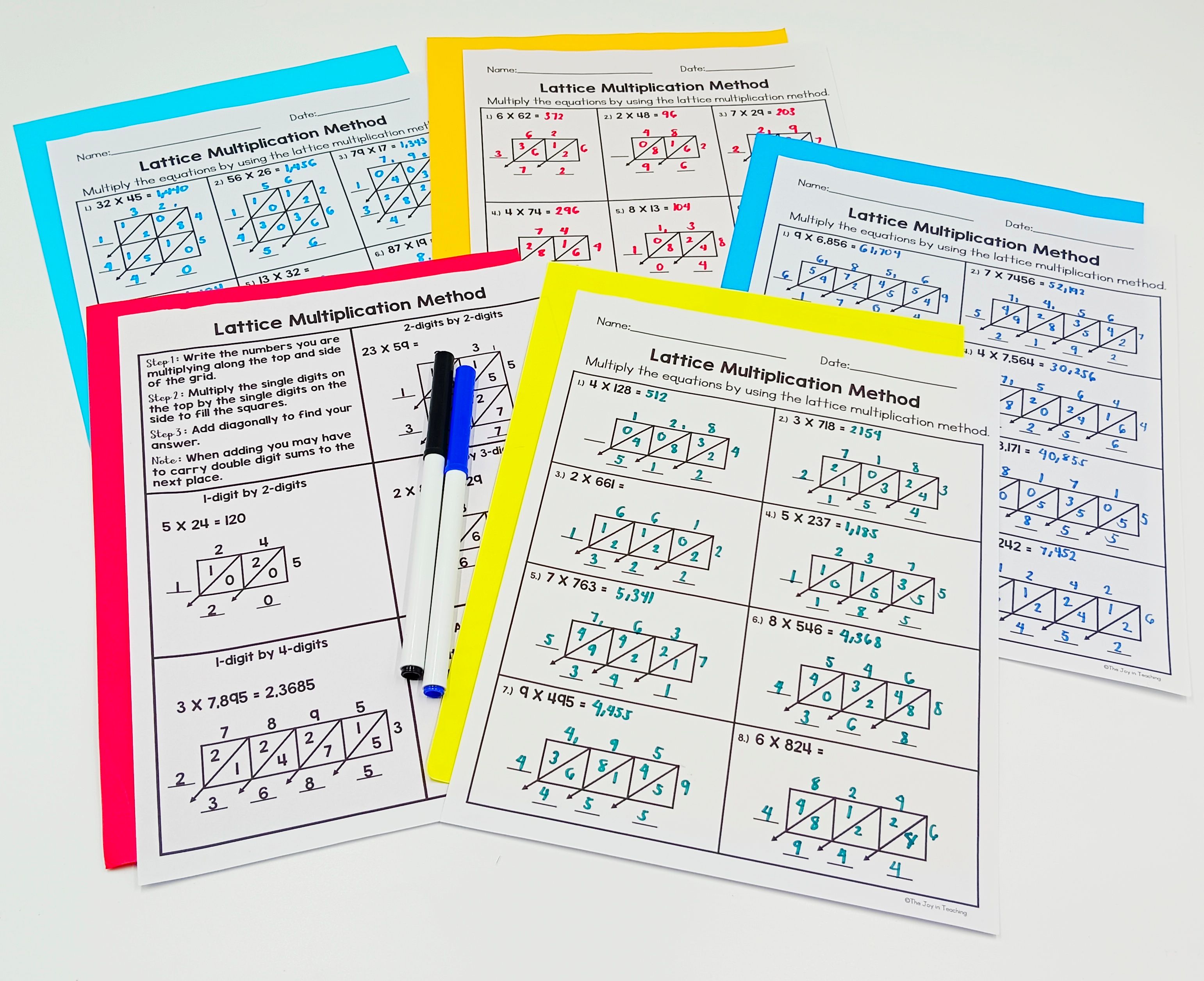
18. FOIL and Array Method: Expanding the Toolkit FOIL (First, Outside, Inside, Last) is a method to multiply binomials but can be introduced early as a way to organize multiplication. Arrays help kids visualize these steps. The more strategies they know, the better problem solvers they become.
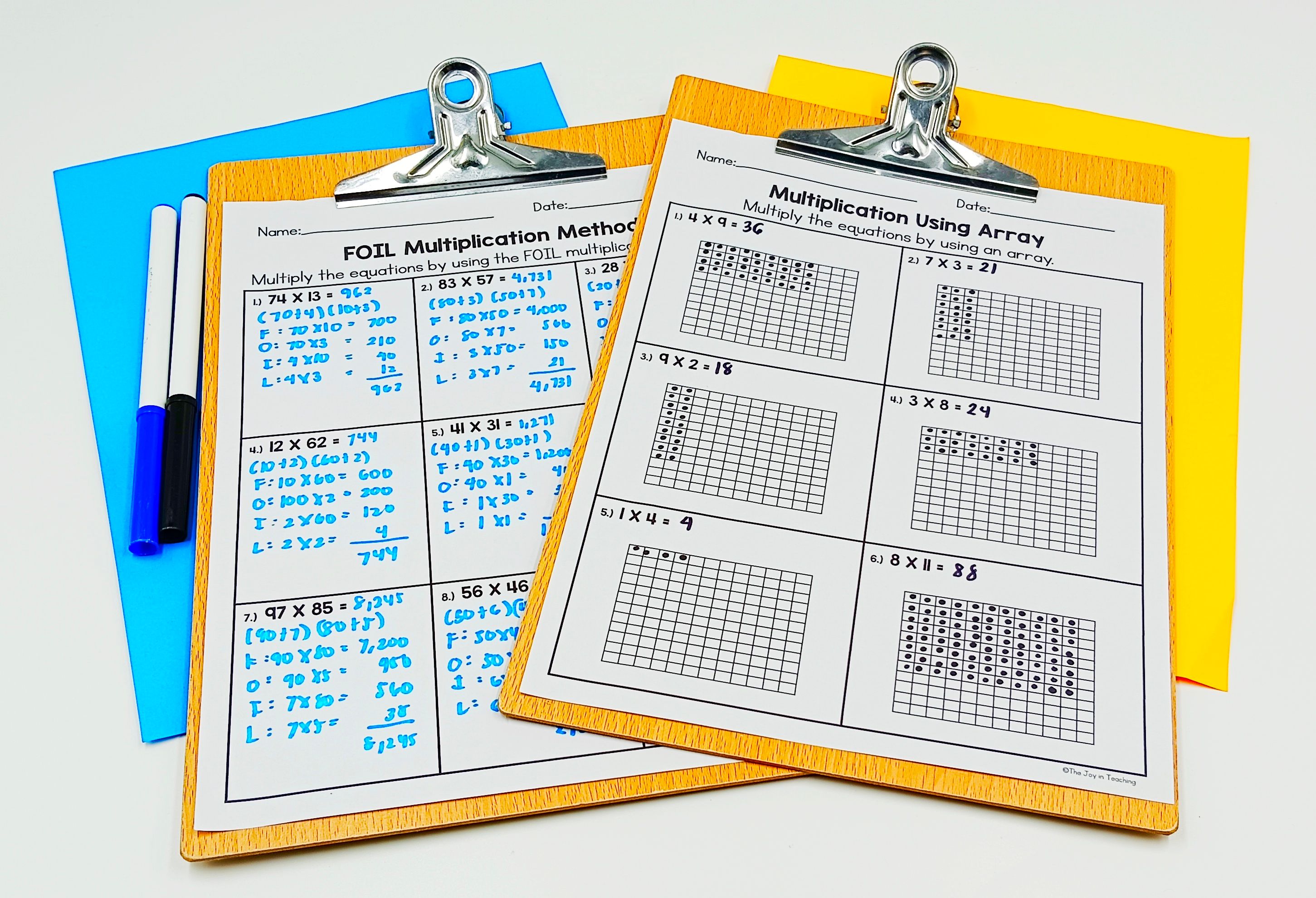
19. Properties of Multiplication: The Math Rules Teaching commutative, associative, and distributive properties helps kids understand why multiplication works the way it does. Use cut-and-paste activities and equation writing to make these rules stick.
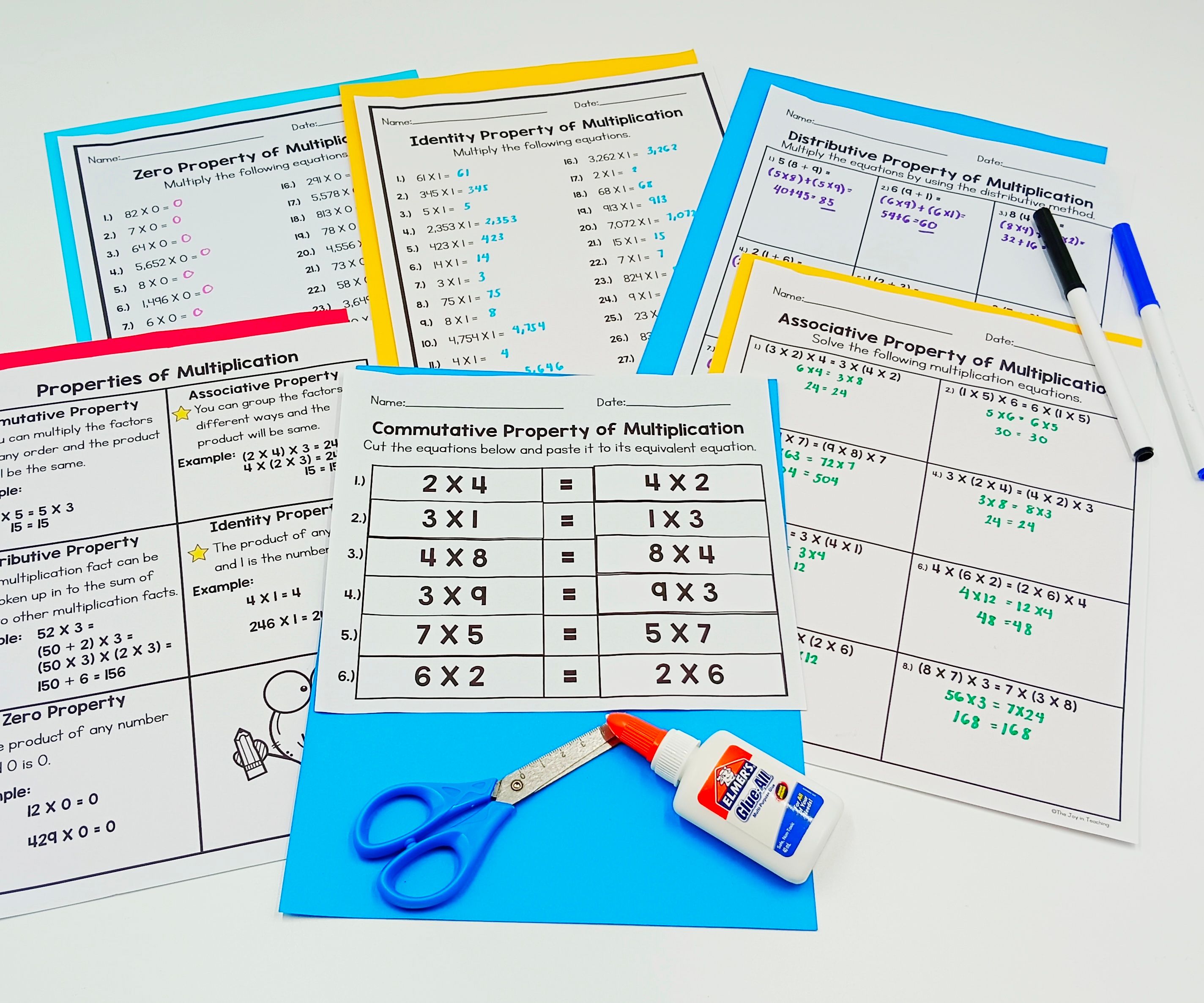
20. Standard Algorithm Method: The Classic Mastering the standard algorithm is a must for fluency. Use worksheets to practice multiplying multi-digit numbers accurately and efficiently.
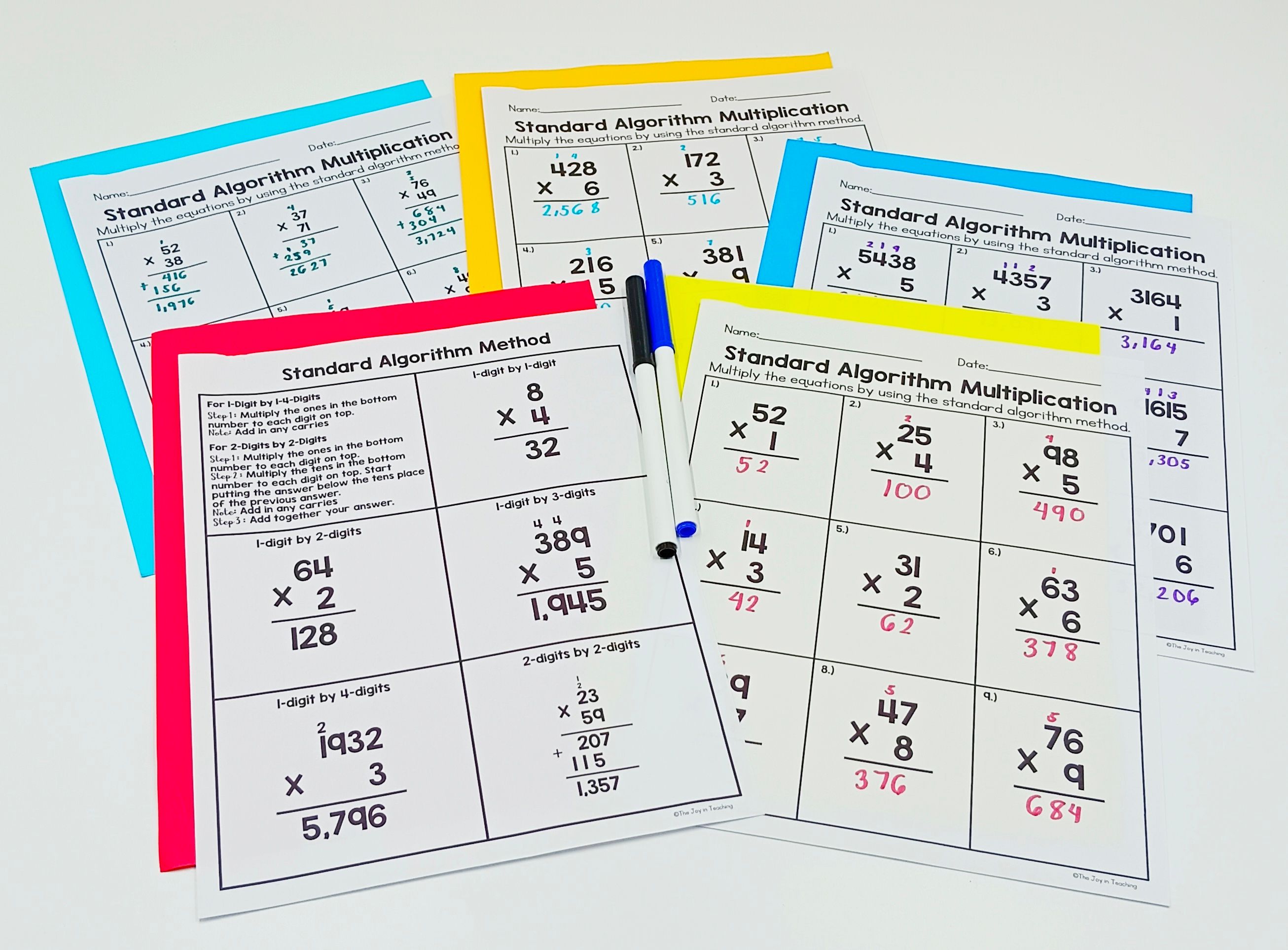
Bonus Tips and Tricks to Make Multiplication Fun
Here are some pro tips to make multiplication practice feel like a party:
1. Gamify the Learning Use flashcards, classroom competitions, or online games. Prizes and praise are like rocket fuel for motivation.
2. Incorporate Technology Apps and educational games make multiplication interactive and fun. Kids love screen time, so why not make it productive?
3. Use Real-World Examples Cooking (doubling recipes), shopping (calculating prices), or sports (scoring points) show multiplication’s practical side.
4. Create a Multiplication Story Have kids invent stories involving multiplication facts. It’s creative and memorable!
5. Integrate Arts and Crafts Arrays with paint, equal groups drawings, or multiplication bracelets combine creativity with math.
6. Utilize Music and Rhymes Songs and chants are awesome memory aids. Find multiplication songs on YouTube or make your own!
7. Celebrate Progress Recognize mastery and milestones. Positive reinforcement boosts confidence and keeps kids motivated.
Looking for a ready-to-go resource to make multiplication easy and fun? Check out my
2. Multiplication Times Table True or False
3. Multiplication Missing Numbers Skip Count
4. Multiplication Missing Numbers
6. Multiplication 1-12 Task Cards
7. Multiplication Using Array Worksheet
8. Multiplication Using Equal Groups Worksheet
9. Multiplication Using Number Line Worksheet
10. Multiplication Using Repeated Addition
11. Verbal Statements of Multiplication
12. Multiplication 1-12 Word Problem
13. Multiplication 1-12 Worksheet
Multiplication (1x1-4,2x2)
1. Area Model Multiplication Method Worksheet
2. Box Multiplication Method Worksheet
3. Distributive Method of Multiplication
4. FOIL Method and Array Method of Multiplication
5. Lattice Multiplication Method
6. Multiplication Word Problem (1X1-4, 2x2)
7. Properties of Multiplication Worksheet
8. Standard Algorithm Method Worksheet
all designed with kids’ engagement in mind. These resources have helped thousands of teachers create dynamic math lessons that kids remember. And, hey, even if your students don’t turn into multiplication prodigies overnight, they’ll certainly enjoy the ride!
Final Thoughts: Multiplication Can Be a Blast! Teaching multiplication doesn’t have to feel like pulling teeth. With the right tools, methods, and a little creativity, multiplication can be a lively, hands-on, and downright fun part of your math curriculum. Mix and match these strategies, sprinkle in some humor, and watch your students multiply their skills—and their smiles. Ready to multiply the fun? Happy teaching, and may your math adventures be full of laughter and learning!
Follow Me for More Teaching Tips with Joy For more tips, resources, and a daily dose of teaching joy, follow me on:
Got questions or want to share your success stories? Drop me an email at thejoyinteaching@gmail.com. I love hearing from fellow educators and parents! Happy Teaching!
Joy Medalla
The Joy in Teaching 💛